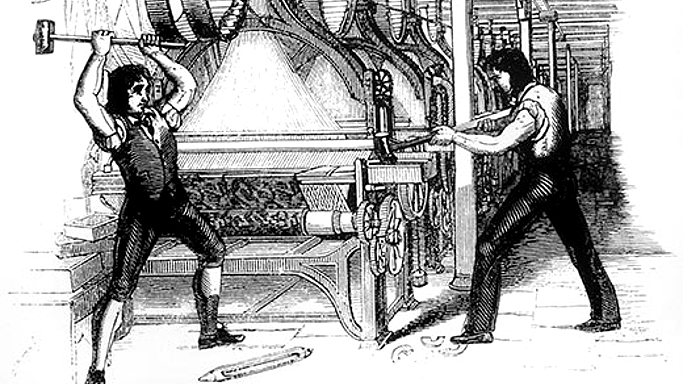
We wrote a bit about Luddites before, but wanted to focus today on a significant date in this trajectory: the first Luddite “attack” on textile machines.
On November 4, 1811 in the evening, a small band of men gathered in the darkness, marched to the home of a master weaver named Hollingsworth, and destroyed six of his weaving machines. This was in the village of Bulwell, four miles north of Nottingham, sparking the Luddite movement across England. However, this event was heralded by riots, beginning in March of 1811, that would continue for another five years.
The Rising of the Luddites, 1880.
A secret-oath based organization of textile workers, the Luddites were a radical faction of the larger movement, which attempted to stop automation and machinery from taking labourer’s jobs.
It was not insignificant that this occurred during the Napoleonic War era, with the economic pinch and rapid industrialization beginning to dramatically change the economic and cultural fabric of England (https://www.smithsonianmag.com/history/what-the-luddites-really-fought-against-264412/). But, contrary to modern beliefs, their smashing of machinery was less about a fear of technology and more about economic opportunity, poverty, and worker protections (https://www.history.com/news/industrial-revolution-luddites-workers). Its also not a coincidence that this worker revolt was taking place with the backdrop of the Regency era of excess.









